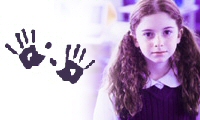Luton Borough Council
Child protection (safeguarding children)

What is child abuse?
Child abuse happens when an adult inflicts harm on a child or young person, even, in some cases, if the adult’s actions are not deliberate. There are four broad categories of child abuse:
Physical abuse – when some causes deliberate harm to a child or young person. This could be by hitting, shaking, throwing, poisoning, burning or suffocating them.
Sexual abuse – when a child or young person is forced or encouraged to take part in sexual activities. Sexual abuse includes: grooming a child with the intention of sexually abusing them; all forms of penetrative and non-penetrative sex; sexually exploiting a child in return for gifts, money or affection; and making, looking at and distributing indecent images of a child.
Neglect - is when a child’s basic physical and psychological needs are failed to be met persistently. This can include failure to provide adequate food, clothing and shelter, protect them from physical and emotional harm or danger, making sure they receive appropriate medical care.
Emotional abuse - is on-going and, over time, severely damages a child or young person’s emotional development. This can be when an adult deliberately tries to humiliate, scare or verbally abuses them or when an adult denies the child the love and care they need in order to be healthy and happy
Children and young people who are being or have been abused are often afraid to tell someone about it. They sometimes feel guilty, confused, and shame. There are some signs you can look out for, but while these signs do not necessarily mean that a child is being abused, they probably indicate that the child or family is having some problems which should be investigated.
- Changes in their personality, eating habits, the way they are dressed
- Regular flinching in response to sudden but harmless actions, e.g. someone raising a hand quickly or showing fear of a particular place or people
- Outbursts of anger which can include showing violent behaviour to other people, toys or animals.
- Self-harming (includes head banging, scratching, cutting)
- Not receiving adequate medical attention after injuries
- Regularly experiencing nightmares or sleeping problems
- Lacking in confidence or often wary/anxious or regressing to the behaviour of younger children
- Knowledge of "adult issues" e.g. alcohol, drugs, sexual behaviour
Other signs of possible abuse will vary depending on the type of abuse and the child or young person’s age.
Infancy to preschool (0 to 3 years)
- Doesn’t cry or respond to parent’s presence or absence from an early age
- Delays in reaching developmental milestones, with no medical reason for this
- Acting out excessive violence with other children
- Significantly underweight but eats well when given food
- Talks of being left home alone or with strangers
Nursery age (3 to 5 years)
- Talks of being left home alone or with strangers
- Lacks social skills and has few if any friends
- Shows lack of attachment to a parent
- Becomes secretive and reluctant to share information
- Acting out excessive violence with other children
School age (5 to 16 years)
- Reluctant to go home after school
- Unable to bring friends home or reluctant for professionals to visit the family home
- Poor school attendance and punctuality, or late being picked up
- Parents show little interest in child’s performance and behaviour at school
- Parents are dismissive and non-responsive to professional concerns
- Is reluctant to get changed for PE etc
- Wets or soils the bed
- Acting out excessive violence with other children
Adolescence
- Drinks alcohol regularly from an early age
- Is concerned for younger siblings without explaining why
- Becomes secretive and reluctant to share information
- Talks of running away
- Shows challenging/disruptive behaviour at school
- Is reluctant to get changed for PE etc
For more information on child abuse and some of the signs of possible abuse please visit the NSPCC website.
What to do if you are concerned about a child
If you are concerned about the welfare of a child please see our Safeguarding Children webpage for details on how to contact MASH.
Luton's Local Safeguarding Children Board (LLSCB) sees all agencies working together to safeguard children from abuse and violence. Follow the link above to find out about policies and procedures, training and further information.
© 2025 Luton Council, Town Hall, Luton LU1 2BQ